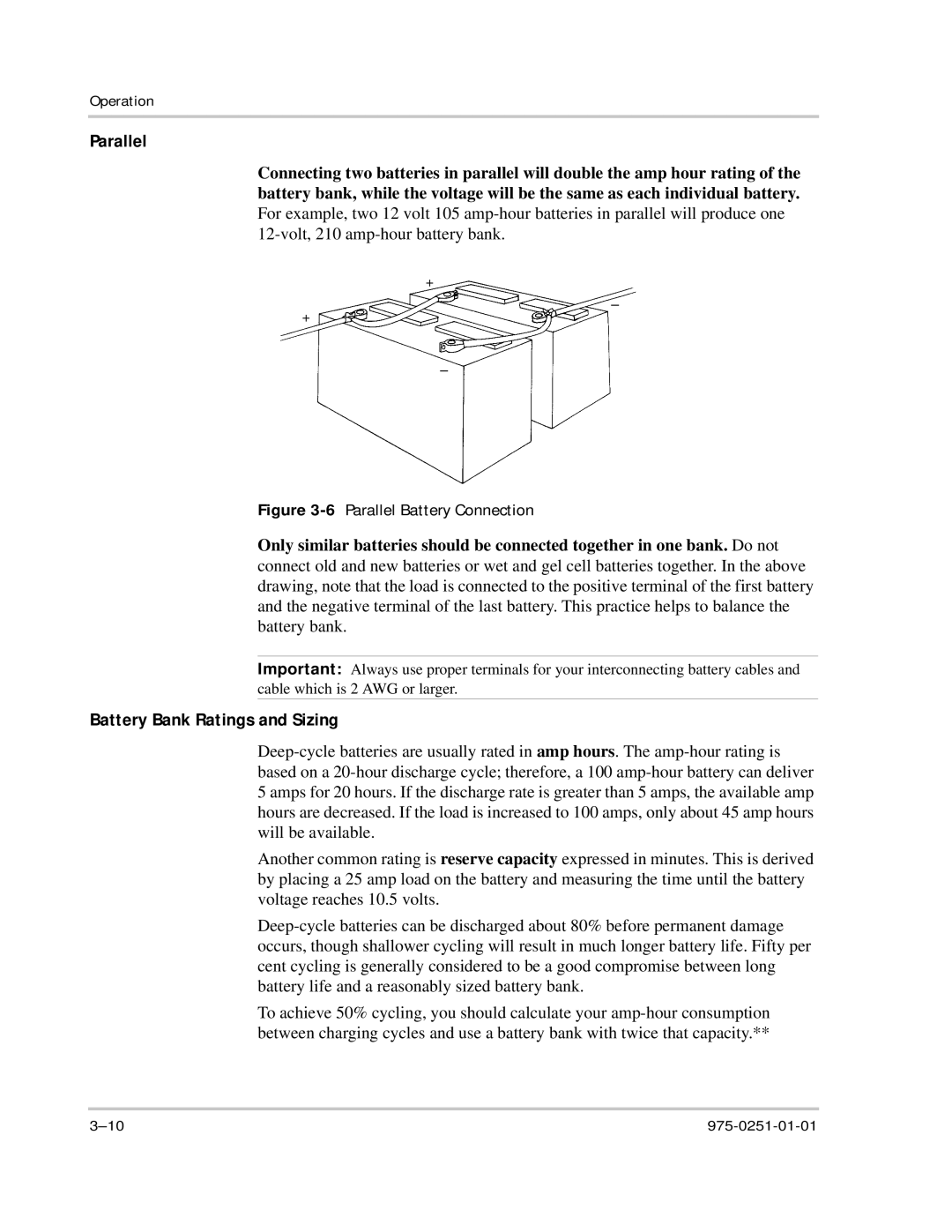
Operation
Parallel
Connecting two batteries in parallel will double the amp hour rating of the battery bank, while the voltage will be the same as each individual battery. For example, two 12 volt 105
+
+
–
–
Figure 3-6 Parallel Battery Connection
Only similar batteries should be connected together in one bank. Do not connect old and new batteries or wet and gel cell batteries together. In the above drawing, note that the load is connected to the positive terminal of the first battery and the negative terminal of the last battery. This practice helps to balance the battery bank.
Important: Always use proper terminals for your interconnecting battery cables and cable which is 2 AWG or larger.
Battery Bank Ratings and Sizing
Another common rating is reserve capacity expressed in minutes. This is derived by placing a 25 amp load on the battery and measuring the time until the battery voltage reaches 10.5 volts.
To achieve 50% cycling, you should calculate your
